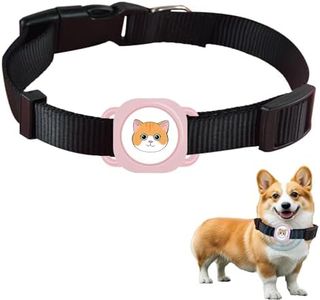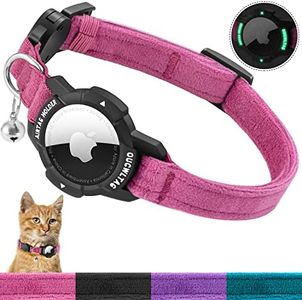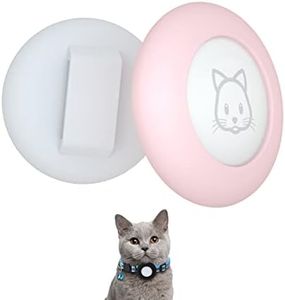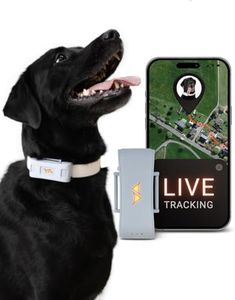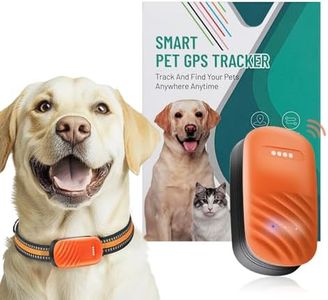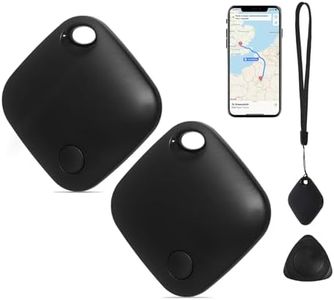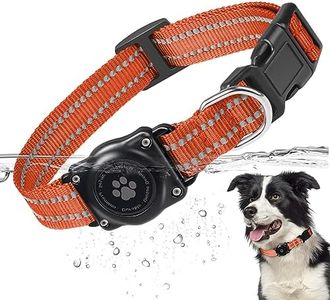We Use CookiesWe use cookies to enhance the security, performance,
functionality and for analytical and promotional activities. By continuing to browse this site you
are agreeing to our privacy policy
10 Best Pet Trackers
From leading brands and best sellers available on the web.By clicking on a link to a third party's website, log data is shared with that third party.
Buying Guide for the Best Pet Trackers
Choosing the right pet tracker can be a great way to keep your furry friend safe and give you peace of mind. Start by thinking about your pet’s size, their habits (are they big explorers or homebodies?), and typical places your pet spends time. Consider what you want out of a tracker—whether it’s real-time tracking, activity monitoring, or even health insights. Once you know what you need, you can look at the available features and see which tracker fits those requirements.Tracking TechnologyTracking technology is the method used by the device to locate your pet. Common options include GPS, Bluetooth, radio frequency, or a combination. GPS is important for long-range, outdoor tracking and is ideal if your pet is prone to wandering far. Bluetooth trackers are best for finding pets inside the house or in nearby areas since they have a much shorter range. Radio frequency trackers can work well without cellular coverage but require a special receiver. When deciding, think about whether you need to track your pet’s location across neighborhoods or just want to find them if they hide around your yard or house.
Battery LifeBattery life tells you how long the tracker will work before needing a recharge or battery replacement. This spec matters because a dead tracker can’t help you find your pet. Devices with long battery lives last weeks or even months, but may update your pet’s location less frequently. Shorter battery lives can give you more frequent updates, but require more regular charging. If you want constant updates and are willing to charge every couple of days, go for shorter battery life with frequent refreshes. If you��’d rather not worry about charging often, lean toward longer-lasting battery options.
Water ResistanceWater resistance describes how well the tracker handles getting wet. This is key for pets who love swimming or spend a lot of time outdoors in all kinds of weather. Devices can range from just splash-resistant to fully waterproof. For pets that play in the rain, puddles, or swim, choose a tracker that is fully waterproof. For pets who rarely get wet, basic water resistance may be enough.
Size and WeightSize and weight indicate how bulky or light the tracker is on your pet’s collar. This is important for your pet’s comfort and safety. Big, heavy trackers may annoy smaller pets, while larger pets can handle bigger devices. If you have a small cat or dog, look for trackers that are lightweight and designed for small animals. Larger dogs can use almost any size, but still look for something that won’t bother them.
Activity and Health MonitoringMany trackers offer extra features like monitoring your pet’s movements, exercise, and sometimes even sleep or health markers. This is important if you also want an overview of your pet’s habits or need to track their activity for health reasons. If health insights are a priority for you, look for models with detailed monitoring. If you only care about location, these features might not be as important.
Range and ConnectivityRange and connectivity refer to how far the tracker can communicate with your phone or a central system. GPS trackers work anywhere there’s satellite signal and sometimes require cell service. Bluetooth trackers usually work within a few hundred feet. Think about where your pet tends to go; for adventurous pets that could get miles away, a tracker with nationwide or global range is best. For homebodies or yard dwellers, short-range options work well.
Subscription RequirementsMany trackers require a monthly or yearly subscription for full features, especially those with GPS and cellular connectivity. This is important to understand because it affects how the tracker works and your ongoing costs. Make sure you’re comfortable with any requirements and fees. If you don’t want ongoing costs, look for trackers that work without subscriptions (often Bluetooth or radio frequency models).

